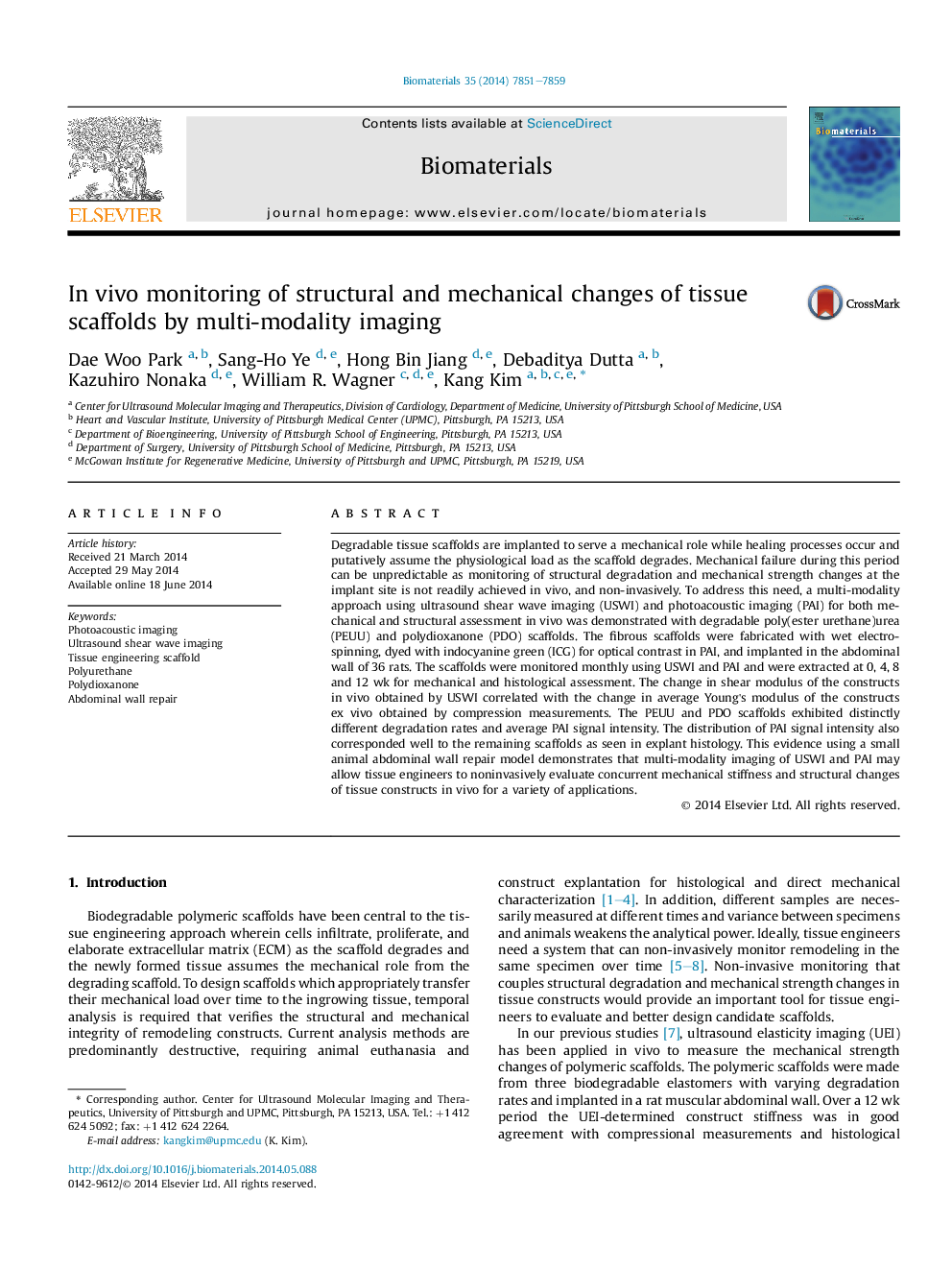| Article ID | Journal | Published Year | Pages | File Type |
|---|---|---|---|---|
| 5869 | Biomaterials | 2014 | 9 Pages |
Degradable tissue scaffolds are implanted to serve a mechanical role while healing processes occur and putatively assume the physiological load as the scaffold degrades. Mechanical failure during this period can be unpredictable as monitoring of structural degradation and mechanical strength changes at the implant site is not readily achieved in vivo, and non-invasively. To address this need, a multi-modality approach using ultrasound shear wave imaging (USWI) and photoacoustic imaging (PAI) for both mechanical and structural assessment in vivo was demonstrated with degradable poly(ester urethane)urea (PEUU) and polydioxanone (PDO) scaffolds. The fibrous scaffolds were fabricated with wet electrospinning, dyed with indocyanine green (ICG) for optical contrast in PAI, and implanted in the abdominal wall of 36 rats. The scaffolds were monitored monthly using USWI and PAI and were extracted at 0, 4, 8 and 12 wk for mechanical and histological assessment. The change in shear modulus of the constructs in vivo obtained by USWI correlated with the change in average Young's modulus of the constructs ex vivo obtained by compression measurements. The PEUU and PDO scaffolds exhibited distinctly different degradation rates and average PAI signal intensity. The distribution of PAI signal intensity also corresponded well to the remaining scaffolds as seen in explant histology. This evidence using a small animal abdominal wall repair model demonstrates that multi-modality imaging of USWI and PAI may allow tissue engineers to noninvasively evaluate concurrent mechanical stiffness and structural changes of tissue constructs in vivo for a variety of applications.
